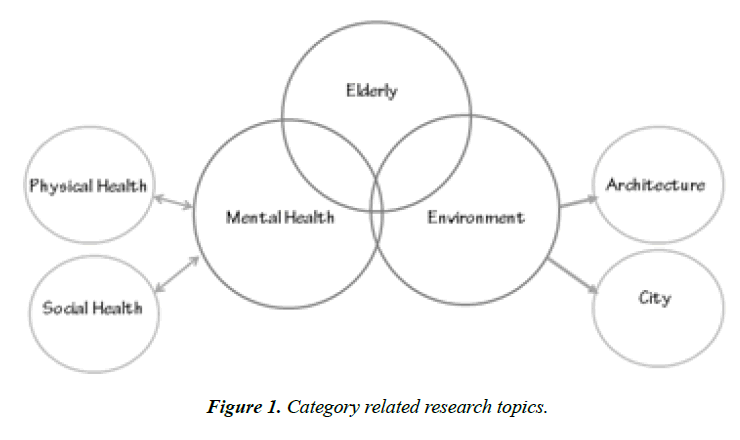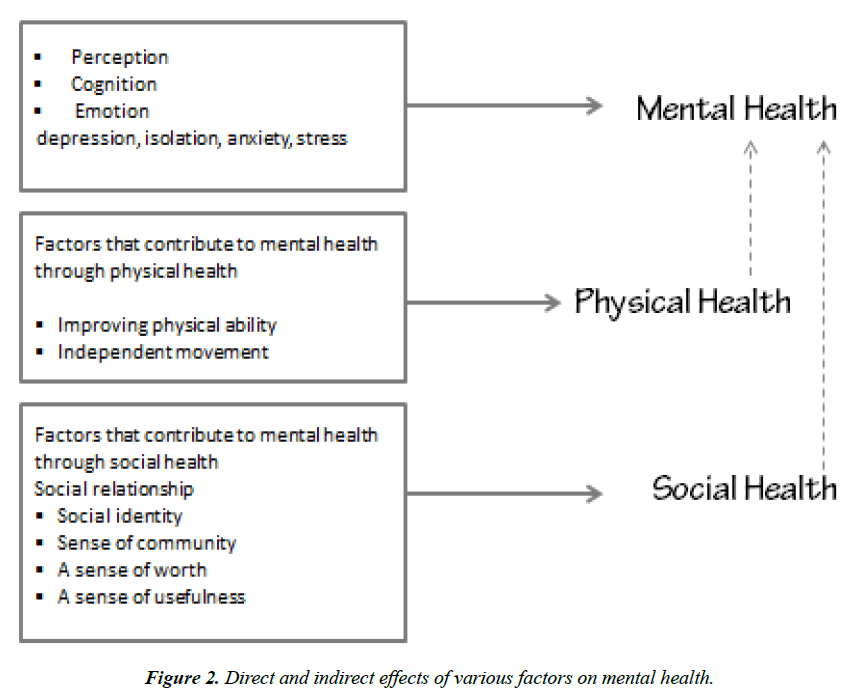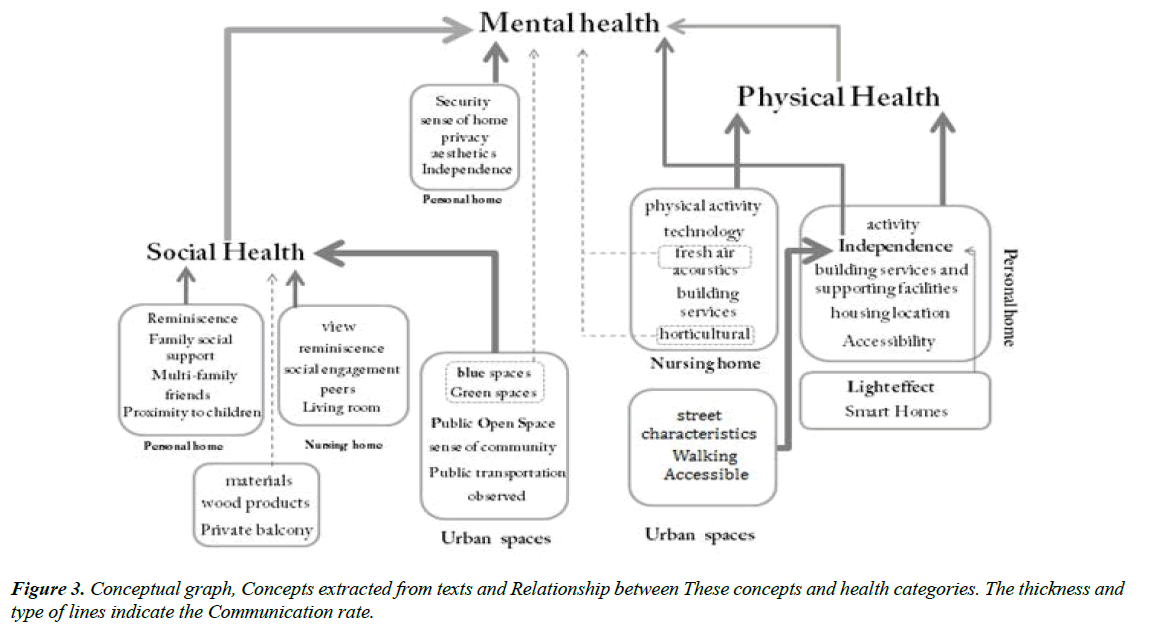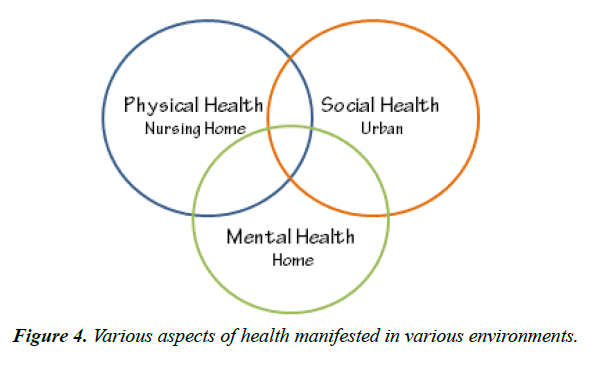Short Communication - Journal of Mental Health and Aging (2022) Volume 6, Issue 4
Home, nursing home and city: The places for aging and mental health.
Mehdi Khakzand1*, Zohreh Rakhshani21Department of Landscape Architecture, School of Architecture and Environmental Design, Iran University of Science and Technology (IUST), Tehran, Iran
2Department of Architecture, Faculty of Architecture and Urban Design, Isfahan Art University, Isfahan, Iran
- *Corresponding Author:
- Mehdi Khakzand
Department of Landscape Architecture
School of Architecture and Environmental Design
Iran University of Science and Technology (IUST)
Tehran, Iran
E-mail: mkhakzand@iust.ac.ir
Received: 25-May-2022, Manuscript No. AAJMHA-22-64814; Editor assigned: 31-May-2022, PreQC No. AAJMHA-22-64814(PQ); Reviewed: 14-Jun-2022, QC No. AAJMHA-22-64814; Revised: 06-Jul-2022, Manuscript No. AAJMHA-22-64814(R); Published: 13-Jul-2022, DOI:10.35841/aajmha-6.4.116
Citation: Khakzand M, Rakhshani Z. Home, nursing home and city: The places for aging and mental health. J Ment Health Aging. 2022;6(4):116
Abstract
One of the most pressing concerns confronting society today is the aging of the population and the issue of mental health. People's physical, social, and mental health, on the other hand, is determined by where they live and the relationship they establish with their environment. In order to identify the concepts related to different environments that affect the mental health of the elderly, this short article has been done by content analysis based on a review study. All concepts related to mental health were extracted and analyzed from previous research texts. The results show that social interactions are the most central concept affecting mental health in the city, while in the nursing home is physical activity and in personal homes is privacy and independence.
Keywords
Aging, Mental health, Physical health, Social health, Home, Nursing home.
Introduction
The world is getting older; both the number and proportion of elderly people are rising in both developed and developing countries. By 2050, it is expected that 21% of the population will be over 60 years old [1]. With the growing global population of older adults, there is a need for environmental factors that affect the mental health and emotional well-being of the elderly both directly and indirectly (through physical and social health).
Many studies have been conducted on the elderly public health, which has resulted in improved care for the elderly in care centers in some cases, but several studies have highlighted the impact of environment components related to the health of the elderly [2-4]. Physical, social, and mental health, on the other hand, has been demonstrated to be inextricably linked Figure 1 [5] and all of these is influenced by the environmental factors. The environment can influence mental health directly through emotions and cognitions, as well as indirectly through physical and social health. Social health is determined in aging study by social interaction [6,7] while physical health is driven by physical activity and independence in aging study [2,8]. This short article, based on a review study, analyses the concepts related to different environments that affect the mental health of the elderly.
Materials and Methods
In this article, the content analysis method is used as a qualitative method. Krippendorff defined content analysis as “a research technique for making replicable and valid inferences from texts (or other meaningful matter) to the contexts of their use” [9]. It is the study of the content of messages in terms of their meanings, contexts, and intentions [10-12] Bernard Berelson published Content analysis in Communication Research in 1952, establishing the concept as a useful tool for social scientists and media academics [13]. It was also used by some historians and political scientists [14]. However, as a form of communication study, the method became more popular among social science scholars [15]. Content analysis is the study of what is contained in a communication. In general, content analysis is a method in which the content of the communication is used to derive inferences and conclusions about the content [16]. For content analysis, three databases (Science direct, Scopus and PubMed) were searched with keywords: "mental health, elderly and environment" and then the search results were categorized and studied. This classification was based on what is stated below.
The American Psychiatric Association states that emotions and cognitions (such as depressive thoughts) are related to mental health [6,17]. Therefore, any concept in the environment that can stimulate the emotions, cognition and perception of the elderly can also support mental health. On the other hand, as previously mentioned, different aspects of health, physical, psychological and social, can influence each other [18]. Environment can affect mental health indirectly through physical and social health. Therefore, all the concepts in the environment that can lead to physical and social health also support mental health in a way. The results of these analyzes are presented in Figure 2.
Result
In this article, three databases were searched (Science direct, Scopus, and PubMed) with keywords: “Mental Health, Elderly, and Environment”. The results of the search on Science Direct were 6180 articles, Scopus were 134 articles and PubMed were 8715 articles. The target period was 2000 to 2020; Articles which were not related to the field of environment and the mental health of the elderly or were not in the desired time period were deleted. Finally, 100 articles remained and were used for content analysis. In the preliminary investigation, it was found that the search results can be classified into three general categories of environment and three specific categories of health. According to the analysis, the three categories of space that the elderly often interact with include city, personal homes and nursing home and attention to all three dimensions of health was seen separately in these studies. Therefore, in the first step, the articles were categorized both in terms of the aspect of health that they paid attention to and also in terms of the environment that they studied. Also many studies have examined the factors affecting the health of the elderly, in which the effective factors were extracted separately and finally each was placed in its own category.
Concepts related to the mental health of the elderly in three categories of environment were extracted from the review study (city, nursing home, personal home), which is presented in Figure 3. As shown in Figure 3, there are concepts in every environment that affect physical, mental and social health. The relationship between these concepts is as follows:
Discussion
Collected articles from 2000 to 2020 were analyzed in two categories of architecture and city. In the field of architecture, two types of housing related to the elderly were considered as “personal homes” and “Nursing home”. The results show that most studies in the field of personal homes for the elderly addressed the factors affecting the cognition and emotion of the elderly. In personal homes, the concept of privacy and Independence was considered more than any other concept, while studies conducted in nursing home have mainly examined the concepts of physical activity that lead to physical health [19-22]. And given that physical health contributes to mental health, it can be said that these concepts can support mental health. In city, one of the most important concepts is the neighborhood, which leads to social interactions. Studies focusing on city and urban spaces have often examined factors that can contribute to social health [23,24]. The findings show that the most direct effective concepts on mental health are in the personal homes of the elderly. Personal homes contain every experience and good and bad moments of the elderly life. The remaining places can all affect mental health by providing other aspects of health, which is an essential topic.
According to the concepts extracted from this content analysis, it is clear that in cities, the concepts that can support mental health through social health are mainly considered, and in nursing homes, the concepts that underlie physical health lead to mental health Figure 4. However, all of these environments are capable of supporting all aspects of health. The architecture can the design of features that improve physical capacities and enable the elderly self-sufficient and independent in performing everyday duties. Another aspect that affects mental health is the engagement of the elderly with their peers, children, and other members of society, which creates a sense of belonging to society and so provides the foundation for mental well-being and mental health [23,25,26]. Architects and environmental designers can use this essential topic to create settings that encourage social interaction. These areas can be used in residential buildings as common areas or in the yard.
In the city, it is critical to consider the scale of residential areas, proximity to green and blue space, walking paths, and the elderly's ability to engage in independent activity. In this regard, it is suggested that amenities in neighbourhoods be created with the physical and mental abilities of the elderly in mind, and that conditions be provided for older activities inside the area. Perception is also one of the aspects that are beneficial in human connection with the environment and human mental health, but it has received little attention in the last two decades. Future studies should pay greater attention to this topic.
Conclusion
Based on the analysis performed, it can be concluded the environment, similar to a physician, plays the role of therapist. Conscious use of concepts affecting health in the design of the environment and architecture, in addition to meeting the physical, psychological and social needs, also helps in the treatment of the elderly and their mental well-being. Also, paying attention to the natural environment and creating a balance and connection between the natural and the built environment can play a significant role in mental health.
References
- World Health Organization. The world health report 2002: reducing risks, promoting healthy life. World Health Organization. 2002.
- El-Gilany AH, Elkhawaga GO, Sarraf BB. Depression and its associated factors among elderly: A community-based study in Egypt. Arch Gerontol Geriatr. 2018;77:103-7.
- Oswald F, Wahl HW, Schilling O, et al. Relationships between housing and healthy aging in very old age. The Gerontol. 2007;47(1):96-107.
- Shin JH. Listen to the elders: Design guidelines for affordable multifamily housing for the elderly based on their experiences. J Hous Elderly. 2018;32(2):211-40.
- Beemer CJ, Stearns-Yoder KA, Schuldt SJ, et al. A brief review on the mental health for select elements of the built environment. Indoor Built Environ. 2021;30(2):152-65.
- Brown SC, Mason CA, Lombard JL, et al. The relationship of built environment to perceived social support and psychological distress in Hispanic elders: The role of “eyes on the street”. J Gerontol: series B. 2009;64(2):234-46.
- Bloom JR. The relationship of social support and health. Soc Sci Med. 1990;30(5):635-7.
- Sun F, Norman IJ, While AE. Physical activity in older people: a systematic review. BMC public health. 2013;13(1):1-7.
- Ford JM. Content analysis: An introduction to its methodology. Personnel Psychol. 2004;57(4):1110.
- Prasad BD. Content analysis. Research methods for social work. 2008;5:1-20.
- Stemler SE. Content analysis. Emerging trends in the social and behavioral sciences: An Interdisciplinary, Searchable, and Linkable Resource. 2015:1-4.
- Drisko JW, Maschi T. Content analysis. Pocket Guide to Social Work Re; 2016.
- Berelson B. Content analysis in communication research. Media studies: A reader. 2000;200209.
- Holsti OR. Content analysis. The handbook of social psychology. 1968;2:596-692.
- Wimmer RD, Dominick JR. Mass media research. Cengage learning; 2013.
- Nachmias D, Nachmias C. Content analysis. Research methods in the social sciences. 1976:132-9.
- Vahia VN. Diagnostic and statistical manual of mental disorders 5: A quick glance. Indian J Psychiatry. 2013;55(3):220.
- Jung CG. Letters of CG Jung: Volume 2, 1951-1961. Routledge; 2015.
- Mahrs Traff A, Cedersund E, Abramsson M. What Promotes and What Limits Physical Activity in Assisted Living Facilities? A Study of the Physical Environment’s Design and Significance. Journal of Aging and Environment. 2020;34(3):291-309.
- Leung MY, Wang C, Wei X. Structural model for the relationships between indoor built environment and behaviors of residents with dementia in care and attention homes. Build Environ. 2020;169:106532.
- Anme T, Tanaka E, Watanabe T, et al. Wood products improve the quality of life of elderly people in assisted living. Int Multidiscip Sci GeoConference: SGEM. 2013:515.
- Roelofsen P. Healthy ageing-Design criteria for the indoor environment for vital elderly. Intell Build Int. 2014;6(1):11-25.
- Xu H. Physical and mental health of Chinese grandparents caring for grandchildren and great-grandparents. Soc Sci Med. 2019;229:106-16.
- Wiles JL, Leibing A, Guberman N, et al. The meaning of “aging in place” to older people. The gerontol. 2012;52(3):357-66.
- Williams L, Zhang R, Packard KC. Factors affecting the physical and mental health of older adults in China: The importance of marital status, child proximity, and gender. SSM-population health. 2017;3:20-36.
- Zhang Z, Zhang J. Perceived residential environment of neighborhood and subjective well-being among the elderly in China: A mediating role of sense of community. J Environ Psychol. 2017;51:82-94.
Indexed at, Google Scholar, Cross Ref
Indexed at, Google Scholar, Cross Ref
Indexed at, Google Scholar, Cross Ref
Indexed at, Google Scholar, Cross Ref
Indexed at, Google Scholar, Cross Ref
Indexed at, Google Scholar, Cross Ref
Indexed at, Google Scholar, Cross Ref
Indexed at, Google Scholar, Cross Ref
Indexed at, Google Scholar, Cross Ref
Indexed at, Google Scholar, Cross Ref
Indexed at, Google Scholar, Cross Ref



